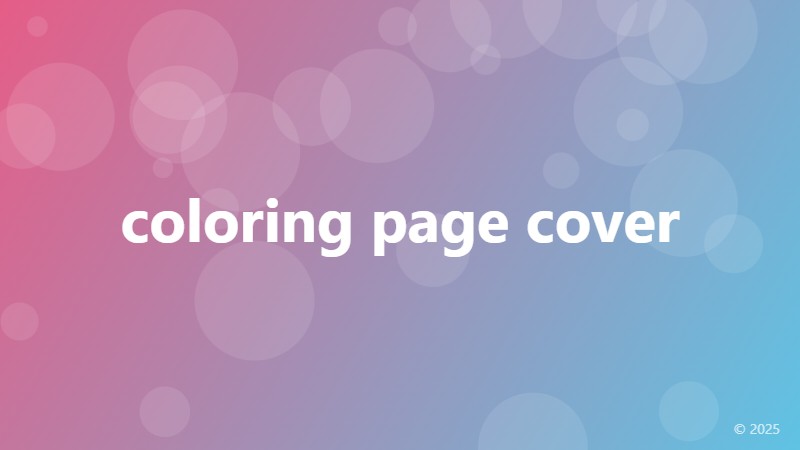coloring page cover

Unlock the Power of Coloring Page Covers
Coloring page covers are more than just a pretty face. They serve as a gateway to a world of creativity, relaxation, and self-expression. A well-designed coloring page cover can entice users to dive into the world of coloring, while a poorly designed one can leave them unimpressed. In this article, we'll explore the importance of coloring page covers and how to create one that truly stands out.
The Psychology Behind Coloring Page Covers
When it comes to coloring page covers, the psychology behind them plays a significant role. Research has shown that visually appealing images can increase engagement and motivation. A coloring page cover that incorporates bright colors, intricate designs, and appealing characters can stimulate the user's brain, releasing endorphins and creating a sense of excitement. On the other hand, a dull and uninviting cover can have the opposite effect, leading to disinterest and a lack of motivation.
A good coloring page cover should not only be visually appealing but also convey a sense of what the coloring page is about. This can be achieved through the use of relevant imagery, such as animals, flowers, or landscapes. By incorporating these elements, the cover can create a sense of anticipation and curiosity, encouraging users to explore the coloring page further.
Designing a Coloring Page Cover That Converts
So, what makes a coloring page cover that converts? Here are some essential design elements to consider:
• Color Scheme: Choose a color scheme that resonates with your target audience. Bright colors can be appealing to children, while more muted tones may be suitable for adults.
• Imagery: Use high-quality, relevant images that convey the theme of the coloring page. This can include characters, landscapes, or objects.
• Typography: Select a font that is easy to read and resonates with your target audience. Avoid using too many fonts, as this can create visual clutter.
• Composition: Balance the composition of the cover to create visual harmony. Avoid clutter and ensure that the most important elements stand out.
Best Practices for Coloring Page Covers
Here are some best practices to keep in mind when creating a coloring page cover:
• Keep it Simple: Avoid clutter and keep the design simple and easy to navigate.
• Make it Relevant: Ensure that the cover is relevant to the coloring page and target audience.
• Use High-Quality Images: Use high-quality images that are visually appealing and relevant to the theme.
• Optimize for Mobile: Ensure that the cover is optimized for mobile devices, as many users will access it on their smartphones.
Conclusion
A well-designed coloring page cover is essential for enticing users and encouraging them to explore the world of coloring. By incorporating the right design elements, psychology, and best practices, you can create a cover that truly stands out and drives engagement. Remember, the cover is the first impression, so make it count!